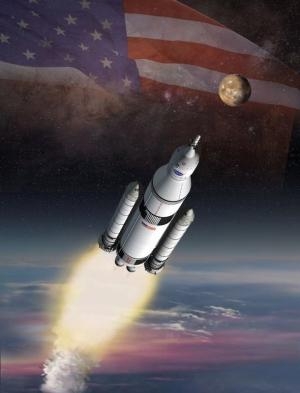Fri, Dec 13, 2013
ATK Achieves 'Significant Milestone' As Booster Integrator
NASA and ATK have successfully completed two key avionics tests for the solid rocket boosters for the space agency's new heavy lift rocket, the Space Launch System (SLS). The avionics tests, called hot fires, operate the booster's thrust vector control (TVC) system as if the booster were actually launching the SLS on a mission. The tests were conducted at ATK's Promontory, Utah, facility and represent a significant milestone as well as validation of SLS cost-saving efforts. As booster integrator, ATK has diligently focused on cost improvements for NASA's deep space exploration program to deliver affordable innovation.

"ATK has integrated value stream efficiencies across our SLS booster supply chain to achieve significant cost improvements," said Charlie Precourt, vice president and general manager of ATK's Space Launch division. "As such, we have been able to design, develop, test and streamline operations as we prepare for the first launch in 2017."
The new, advanced avionics system is a critical aspect of the twin SLS boosters, providing power distribution, communication with the flight computers, booster ignition, command and control of the booster steering system and booster staging. The tests simulated SLS launch sequences both in preflight checks and in an ascent profile by verifying communication between ground and flight systems, starting motor ignition and moving the TVC system. The successful testing validated the new SLS booster avionics subsystem and electronic support equipment (ESE). Training and evaluating the test team was an additional component of the test as team members were subjected to a variety of atypical conditions during simulated countdowns and firings. People, processes and tools were evaluated to strengthen and enhance performance at launch. "Knowledge transfer is one of the most critical aspects of the avionics test and one of the most rewarding," said Precourt. "It's inspiring to see our early career employees train
on this modernized system, armed with knowledge passed on to them by our world-class Space Shuttle team."
Other test objectives included validating the new electronic support equipment that replaced heritage ground equipment. Much of the equipment replaced was designed and built during the mid- to late-1970s and was successfully used on all 53 of the Space Shuttle Reusable Solid Rocket Motor and three 5-segment development motors static motor firings. The innovative equipment demonstrated in these tests dramatically reduces cost and increases reliability of the booster system.
(Image provided by NASA)
More News
Performance-Based Navigation (PBN) [ICAO] Area navigation based on performance requirements for aircraft operating along an ATS route, on an instrument approach procedure or in a d>[...]
The Airplane Came To Rest Underneath A Set Of Damaged Power Distribution Lines On The Floor Of A Coulee On June 19, 2025, at 1412 mountain daylight time, a Cessna 172K airplane, N7>[...]
Aero Linx: FAA Managers Association (FAAMA) Recognized by the FAA, FAAMA is a professional association dedicated to the promotion of excellence in public service. The Association i>[...]
From 2023 (YouTube Edition): Jet Central Micro-Turbine Engines Impress Founded in the late-1990s, Mexico City-based Jet Central produces a unique and fascinating line of micro-turb>[...]
Also: ANOTHER Illegal Drone, KidVenture Educational Activities, Record Launches, TSA v Shoes The Senate confirmed Bryan Bedford to become the next Administrator of the FAA, in a ne>[...]
 ANN's Daily Aero-Term (07.10.25): Performance-Based Navigation (PBN) [ICAO]
ANN's Daily Aero-Term (07.10.25): Performance-Based Navigation (PBN) [ICAO] NTSB Prelim: Cessna 172
NTSB Prelim: Cessna 172 ANN's Daily Aero-Linx (07.10.25)
ANN's Daily Aero-Linx (07.10.25) Classic Aero-TV: The Big Business of Diminutive Powerplants
Classic Aero-TV: The Big Business of Diminutive Powerplants Airborne 07.11.25: New FAA Bos, New NASA Boss (Kinda), WB57s Over TX
Airborne 07.11.25: New FAA Bos, New NASA Boss (Kinda), WB57s Over TX



